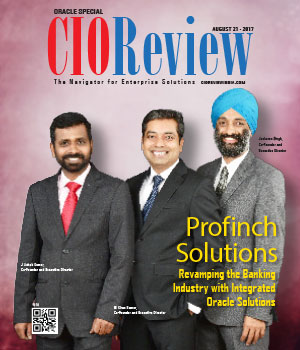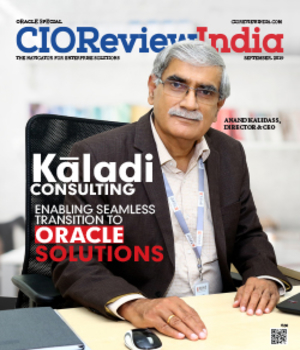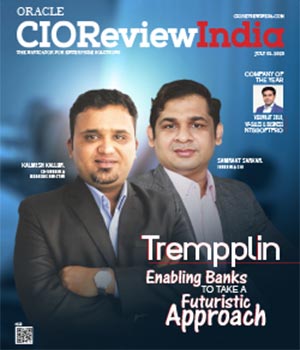
Fueling the EV Future - Insights from karan Dhillon, Co-founder, Perpetuity Capital on Financing India's Green Mobility
CIOTechOutlook Team | Tuesday, 06 May 2025, 10:11 IST
 1. What trends do you see shaping the EV industry over the next 5 years? How might these trends impact EV financing?
1. What trends do you see shaping the EV industry over the next 5 years? How might these trends impact EV financing?
The coming five years represent a critical juncture for the electric vehicle industry, as several key trends reshape the landscape. Foremost among these is the anticipated substantial decline in battery costs, which will make EVs more competitively priced. This, in turn, will elevate residual values, directly impacting financing decisions.
Furthermore, the continuous deployment of charging infrastructure will be crucial in enhancing user convenience and strengthening consumer confidence, effectively reducing perceived risks associated with EV ownership. At Perpetuity Capital, we are committed to supporting the growth of the electric vehicle (EV) ecosystem by providing debt funding to start-ups that are building EV infrastructure across the country. We actively collaborate with and finance battery manufacturers and battery swapping companies, and we are looking to expand our partnerships with start-ups offering complimentary services in the renewable energy space.
2. What role do you think partnerships with EV manufacturers or charging infrastructure providers play in the financing of electric vehicles?
Perpetuity Capital currently has strong strategic partnerships with over 40 electric vehicle (EV) manufacturers, including leading 2-wheeler and 3-wheeler brands such as Atul Auto, Euler Motors, and Saera Electric. These collaborations enable us to offer tailored financing solutions — such as discounted interest rates and integrated insurance — that enhance affordability and reduce the perceived risks associated with EV ownership. This positions Perpetuity as the preferred financing partner for leading players in the EV space, providing end-users with flexible financing options across a wide range of models and brands.
Parallelly, we actively support start-ups building EV charging infrastructure, contributing to the growth of a self-sustaining ecosystem that does not rely solely on government support. By financing a broad spectrum of players across the EV value chain, we not only help customers access convenient and affordable charging solutions but also reduce systemic risk. This comprehensive approach supports easier charging, maintenance, and resale of EVs — ultimately leading to longer vehicle lifespans, higher residual values, and potentially lower default rates, creating a positive compounding effect for the entire ecosystem.
3. What specific policies in the Union Budget 2025 do you believe will have the most significant impact on the EV financing market?
The Union Budget 2025 offered limited encouragement for the EV sector. While duties on 35capital goods for EV battery production were removed, the cost savings are unlikely to reach end users, as manufacturers are still operating on thin margins. Additionally, the reduction in FAME subsidies may lead to higher EV prices, impacting overall adoption and influencing the direction of EV financing in India.
To drive growth, policy support such as enhanced FAME incentives for commercial EVs, reduced road tax and GST rates, or interest subvention on EV loans would make financing more appealing to a broader audience. Investment in charging infrastructure is another critical area—government funding for its rapid expansion could boost consumer confidence and, in turn, benefit EV financiers. Lastly, offering higher depreciation benefits for corporate EV buyers could encourage fleet electrification, opening new opportunities for structured fleet financing.
4. What strategies do you think are most effective in reaching underserved markets (e.g., low-income households) for EV financing?
Expanding EV access in underserved markets requires a blend of financial innovation, education, and strong local partnerships. At Perpetuity Capital, we offer microfinance-based EV loans with affordable down payments and extended tenures, carefully structured around the earning capacity of drivers — based on vehicle type and geography — to ensure sustainable ownership.
We have streamlined documentation by making the process 100% digital and we use a tailored credit scoring system for these markets, making the process accessible. Understanding the limitations of payment infrastructure, we provide flexible repayment options — including both cash and digital modes — supported by our on-ground teams and dealer network.
Given the higher risk in these segments, we rely on a robust dealer network for collections and after-sales support. To further mitigate risk, we require comprehensive insurance and GPS tracking in all financed vehicles, ensuring added security for both customers and financiers.
5. How would you assess the potential risks in the EV financing market, especially with fluctuating fuel prices and shifting government policies?
While the long-term outlook for EVs remains strong, the financing landscape carries certain risks. Policy uncertainty — such as sudden cuts to subsidies — can impact affordability and demand. Similarly, fluctuating fuel prices affect consumer sentiment; though higher fuel costs boost EV appeal, sharp declines can slow adoption. To address this, our financing models emphasize total cost of ownership rather than fuel savings alone.
For first-time borrowers and those new to credit, we’ve integrated AI-driven UPI transaction analysis and developed a proprietary credit scoring system based on 32 alternative data points to assess creditworthiness.
Battery performance and depreciation also pose challenges, as they influence resale value. To mitigate this, our wide dealer network and established retail customer base help us facilitate used EV sales, ensuring better asset recovery and customer support.
6. With the rise of electric vehicle subscription services, do you think these services will become a larger part of Perpetuity Capital’s business model in the future?
At Perpetuity Capital, along with supporting start-ups, our primary customers — auto-rickshaw drivers and gig economy workers — value asset ownership as a path to financial independence and entrepreneurial pride. Subscription models, by design, prevent true ownership, limiting the borrower’s ability to treat the asset as a store of value or resell it at a fair price. For our customer base, ownership remains a far more empowering and economically viable option. Therefore, we are not currently exploring B2C subscription-based financing.
CIO Viewpoint
Why Foolproof Facial Recognition Is Key Against...
By Joseph Sudheer Thumma, Global CEO & MD, Magellanic Cloud
National Technology Day 2025: Powering Progress...
By CIOTech Outlook Team
Aligning IT Roadmap with Business Objectives: A...
By Subhash singh Punjabi, CISO & Head Enterprise Architecture, Deepak Fertilisers & Petrochemicals Corporation Ltd
CXO Insights
Modernizing Enterprise Database Infrastructure...
By Ashish Ray, VP, Mission-Critical Database Technologies, Oracle
Enhanced Database Technology in Business...
By Srikanth Doranadula, Group Vice President-Technology and Systems, Oracle India
ISVs driving the dream of a tech-first world in...









